Nordirland |
|
|
|
| Übersicht – Contents: | |
Diese Seite ist Teil des Projektes
Nordirland |
|
|
|
| Übersicht – Contents: | |
Flaggen – Flags: |
|
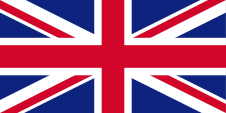 |
Staatsflagge und Gösch Großbritanniens |
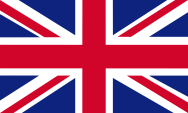 |
Nationalflagge Großbritanniens    |
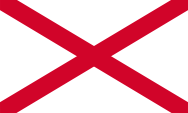 |
manchmal offiziell |
historische Flaggen – historical Flags: |
|
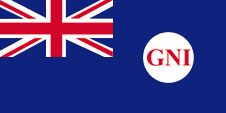 |
1929–1953, Flagge für Regierungsschiffe – flag for government vessels, Seitenverhältnis – ratio = 1:2, Quelle/Source, nach/by: World Statesmen |
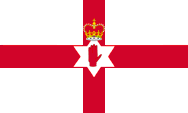 |
1953–1973, Flagge von Nordirland – flag of Northern Ireland, Seitenverhältnis – ratio = 3:5, Quelle/Source, nach/by: Wikipedia (D) |
Bedeutung/Ursprung der Flagge – Meaning/Origin of the Flag: |
|
| Nordirland hat seit 1973 offiziell keine eigene Flagge mehr. Es wird die Flagge Großbritanniens verwendet. Die heute als Flagge Nordirlands bekannte Flagge, das Ulster-Banner, wurde 1924 eingeführt, und verbindet die Flagge Englands (rotes Georgskreuz auf weißem Grund) mit dem Wappen der Landschaft Ulster. Dieses ist ein sechs-zackiger rotumrandeter weißer Stern mit einer roten Hand in der Mitte. In der Flagge wird das Wappen durch die britische Krone als Zeichen britischer Oberhoheit ergänzt. Die sechs Zacken des Sterns stehen für die historischen sechs Grafschaften des Landes. |
Northern Ireland has not officially had its own flag since 1973. The flag of
the Unitd Kingdom is used. The today as flag of Northern Ireland known flag, the Ulster Banner, was introduced in 1924, and it combines the flag of England (red St. George's Cross on white ground) with the coat of arms of Ulster. This is a six-point red bordered white star with a red hand in the centre. In the flag, the top of the coat of arms is completed with the British Crown as a sign of the British sovereignty. The six points of the star stand for the historic six counties of the land. |
| Das Ulster-Banner wurde 1953 offziell und bis 1973 verwendet, als Regierung und Parlament abgeschafft wurden. Heute wird offziell nur die Flagge Großbritanniens verwendet. Allerdings erfreut sich das Ulster-Banner immer noch sehr großer Beliebtheit, vor allem unter Loyalisten und es wird auch inoffiziell bei Sportveranstaltungen verwendet um das Land zu repräsentieren. |
The Ulster banner became
official in 1953 and was used until 1973, when government and parliament
were abolished. Today only the flag of United Kingdom is officially used. However, the Ulster banner is still very popular, particularly among loyalists, and is also used unofficially at sporting events to represent the country. |
| Die Farben im Ulster-Banner (eigentlich nur Rot) sind grundsätzlich der korrekten farblichen Darstellung des Union Jack untergeordnet und entsprechen so den Farben der Flagge von Großbritannien: Blau pt 280 c und Rot pt 186 c. |
The colors in the UlsterBanner (actually
only red) are basically subordinated to the correct color representation
of the Union Jack and thus correspond to the colors of the flag of the
United Kingdom: blue pt 280 c and red pt 186 c. |
| Quelle/Source: Die Welt der Flaggen, Wikipedia (EN), Flags of the World, Volker Preuß | |
Landkarte – Map: |
 Quelle/Source: Freeware, University of Texas Libraries, modyfied by: Volker Preuß |
 Quelle/Source: U.S. Central Intelligence Agency, Public domain, via Wikimedia Commons, zum Vergrößern klicken, click to enlarge |
Zahlen und Fakten – Numbers and Facts: |
|
|
|
|
|
|
|
|
|
|
|
|
|
|
|
|
|
|
|
|
Geschichte: |
|
ca. 600 v.Chr. · keltische Besiedlung ca. 440–500 · Christianisierung durch St. Patrick ca. 800–1000 · Normanneneinfälle 1169 · Heinrich II. (König von England) erobert Irland 1534 · Heinrich VIII. (König von England) wird König von Irland 17. Jhd. · Besiedlung durch englische und schottische Protestanten 1649 · Aufstand der katholischen Iren 1921 · Bildung des Irischen Freistaates, ohne Nordirland 1969–1970 · blutige Unruhen zwischen Iren und Loyalisten 1972 · blutige Unruhen zwischen Iren und Loyalisten 1974 · Irland erkennt Nordirland als Teil von Großbritannien an 1998 · Wahlen zu einem neuen Regionalparlament 02.12.1999 · die Regionalregierung beginnt ihre Arbeit 01.07.2001 · die Regionalregierung beendet wieder ihre Arbeit |
History: |
|
ca. 600 B.C. · Celtic settlement ca. 440–500 · conversion to Christianity by St. Patrick ca. 800–1000 · Norman invasions 1169 · Henry II. (King of England) conquers Ireland 1534 · Henry VIII. (King of England) becomes king of Ireland 17. cent. · settlement by English and Scottish protestants 1649 · uprising of the Catholic Irish 1921 · establishment of the Irish free state, without Northern Ireland 1969–1970 · bloody disturbances between Irish and Loyalists 1972 · bloody disturbances between Irish and Loyalists 1974 · Ireland recognizes Northern Ireland as a part of United Kingdom 1998 · election for a new regional parliament 2nd of December in 1999 · the regional government begins its work 1st of July in 2001 · the regional government ends its work |
| Quelle/Source: Wikipedia (D) |